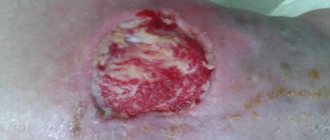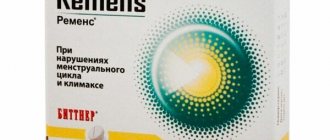Many people, either in their profession or in their everyday lives, are exposed to the influence of a substance such as formaldehyde. In small doses, this substance does not cause much harm. However, with constant exposure to it or the influence of large doses, a person experiences disruption of the functioning of certain body systems. Signs of damage to the body by formaldehyde do not appear immediately. After several months of close contact, a person begins to feel causeless weakness, malaise, apathy, dermatitis, cough and a complex of other symptoms.
What is formaldehyde
Formaldehyde is a chemical compound that has a pungent odor, can dissolve in liquids and ignite . Formalin is a 40% aqueous solution of formaldehyde.
The chemical characteristics of the poison pose a threat to human health and life. If you drink formaldehyde in an amount of 35 to 90 mg, you can die.
The substance is produced industrially by the oxidation of methanol. Formalin belongs to the first class of danger, as it can affect the cellular level. The poison can penetrate into internal organs as a result of chemical interactions that have occurred, and can also be formed in living organisms from other substances. Methanol is found in many household chemicals.
A person is regularly exposed to negative fumes, but a single inhalation of formaldehyde, as a rule, does not provoke serious consequences.
The smell of formaldehyde is extremely pungent and unpleasant.
However, detecting poison on your own is almost impossible: this requires special instruments and reagents. The smell of formaldehyde can be described as specific. At the moment, pharmacy chains sell the antiseptic “Formidron”, which contains formaldehyde. Use the product carefully, avoiding inhalation of vapors.
The permissible dose of the substance is up to 0.2% in cosmetics and up to 0.1% in mouth rinses . In medicines its content should not exceed 0.5%. Products containing 5% of this compound can also be used, but are contraindicated for use on the face.
The maximum permissible concentration in cosmetics, in particular shampoos and bathing foams, is 0.1%, with only 1 person out of 75,000 experiencing a negative skin reaction.
As follows from the description, formaldehyde is one of the dangerous poisons that can disrupt the functioning of internal organs and cause human death.
Scope of application
The substance is used primarily in medicine and industry. This compound is included in nail polishes and hair care products. A small dose of it is included in some cosmetic preparations as a disinfectant and preservatives, and is included in creams, deodorants, shampoos, and mouth rinses .
Sources of poisoning by chemical compounds are divided into several hazard classes based on their properties. Formaldehyde is a strong toxin, has the ability to explode, and has a negative effect on humans upon internal penetration.
There are a large number of sources of intoxication. These include:
- gas stoves;
- vehicle exhaust gases;
- glue;
- medicines;
- household chemicals;
- cosmetics;
- carpets;
- smoke from tobacco and electronic cigarettes;
- fertilizers and others.
The maximum concentration is observed at high humidity and high temperatures.
The properties of formaldehyde are used to disinfect medical equipment and devices, to sterilize objects, treat diaper rash and skin lesions, and reduce sweating.
The use of formaldehyde is exclusively external: inhaling and drinking the solution is extremely dangerous to life . It is used for local disinfection, as a deodorizing and astringent. In addition, a diluted solution is used for douching.
The substance is most often found in the chemical industry, in the production of paints, paper products, resins, textiles and plastics. The compound has also found its use in the wood processing industry, in the manufacture of floor coverings, in the processing of animal skins, as an antiseptic and antimicrobial agent, and in the production of yeast.
Impact on humans
The effect of the compound on the human body is extremely unfavorable: it can cause severe poisoning and is equivalent to arsenic intoxication . Under the influence of vapors, the brain, respiratory system, and mucous surfaces suffer. The harm of formaldehyde to humans is severe intoxication of internal organs. The most severe consequences include:
- swelling of the pulmonary system and larynx, causing difficulty breathing, respiratory failure, which often causes death;
- kidney inflammation;
- menstruation and endocrine disorders leading to the inability to conceive in women;
- difficulty urinating, leading to coma;
- death of the mucous membranes of the stomach and esophagus;
- internal hemorrhage.
Is formaldehyde harmful to humans? This question can definitely be answered positively.
With regular inhalation of vapors, a person may become more sensitive to the poison, which ultimately leads to more serious complications.
In addition, the poison negatively affects internal organs: liver, kidneys, respiratory and visual systems, and is also a powerful allergen. Formalin has a carcinogenic effect on the fetus, leading to cell mutation, destroying nerve tissue and optic canals. Having penetrated the bloodstream, it reacts with blood proteins and is synthesized into formic acid, which is difficult to remove from internal organs.
What is the effect of formaldehyde on children? Babies are the most sensitive to the world around them, which is why a carcinogen can have a significant impact on their body. With continuous interaction with dangerous objects, even a small concentration of it can provoke serious complications. The substance may be contained in children's toys, teethers, pacifiers, stickers, and plastic baby dolls.
Consequences of poisoning
A carcinogen can enter the human body in the following ways:
- by inhalation;
- orally;
- by direct interaction with the skin.
It is worth noting that the distribution of this compound throughout the body is uneven. It deposits most intensively in the following internal organs:
- pancreas;
- mucous surfaces of the intestinal system;
- lymph;
- salivary glands;
- bone marrow.
If accidentally or intentionally ingested, people may develop:
- severe renal failure;
- liver pathology, characterized by the destruction of its cells;
- bleeding of the mucous surfaces of the stomach;
- necrosis of the esophagus.
Formaldehyde can be irritating to the respiratory system and lead to the following pathologies:
- bronchitis;
- pulmonary obstruction;
- exacerbation of bronchial asthma.
When interacting with the skin, the compound can provoke:
- dermatitis, which often becomes chronic;
- hives, rash;
- destruction of nails;
- redness and burning;
- weeping eczema.
The substance can destroy the immune system, provoke changes in blood composition, reduce the levels of lymphocytes and immunoglobulin A, so the dangers of formaldehyde should be known to anyone who wants to protect themselves from the effects of poison.
Benefit of connection
Despite the strong toxicity of formaldehyde, it can also be beneficial, especially in the pharmaceutical industry.
The gas does not bring obvious benefits in its pure form, but it can be useful as:
- preservative for cosmetics;
- disinfector for processing instruments;
If a person inhales formaldehyde, the gas burns the internal organs that participate in the respiratory process. Once on the skin, concentrated formaldehyde immediately leads to its necrosis, and the development of liver or kidney failure is also possible.
Symptoms of intoxication
Formaldehyde poisoning may have some characteristics, mainly from the brain and respiratory organs. These include:
- attack of suffocation;
- coughing;
- difficulty breathing;
- itching and burning of the mucous surfaces of the esophagus and larynx;
- diarrhea and vomiting with blood streaks;
- intense thirst;
- pale skin;
- mood swings;
- prostration;
- sleep disturbance;
- convulsive syndrome;
- coordination disorder;
- headache;
- weight loss.
In people who frequently come into contact with poison, signs may manifest themselves in the form of allergic reactions, hives, and brittle nails . In women there is a disruption in menstruation, in men there is a decrease in libido.
High concentrations can lead to toxic shock, coma, and death.
Oral exposure to the substance
Accidental ingestion of formaldehyde can occur unknowingly because the chemical solution cannot be distinguished from standard water. The substance settles mainly in the stomach and larynx, but is distributed throughout the gastrointestinal tract.
Immediately after exposure to the substance, symptoms of poisoning can be noted such as:
- vomiting blood;
- severe diarrhea;
- a burning sensation in the nasopharynx, to which pain is added.
As with inhalation, oral administration can cause swelling of the larynx and respiratory arrest, which requires urgent medical attention. If qualified medical care is not provided, formaldehyde will put a strain on the kidneys, causing hemorrhagic nephritis.
12 hours after entering the gastrointestinal tract, formaldehyde reaches the bone marrow, where it has a destructive effect on it.
Who's at risk
The following categories of the population are most susceptible to the effects of the carcinogen:
- people involved in the chemical industry;
- living near chemical plants;
- workers in workshops for the production of furniture, paper, sewing accessories, food additives;
- medical laboratory technicians;
- morgue workers;
- people whose activities involve embalming corpses and funeral services.
In addition, a connection has been established between formaldehyde and cancer: it is considered a strong carcinogen.
Studies regarding formalin have found that workers involved in embalming corpses and making furniture are more prone to skin cancer, tumors of the respiratory system, tumors in the stomach, lungs, prostate, and intestines .
People engaged in potentially hazardous production for more than 10 years are at increased risk for the following malignant diseases:
- Hodgkin's lymphoma;
- myeloma;
- myeloid leukemia.
It has been established that the substance acts directly on cells, which provokes gene mutation .
First aid and treatment
In case of food poisoning that contains formaldehyde, the victim must be taken to the hospital by calling medical professionals. If necessary, if the patient requires immediate assistance, emergency measures will help:
- remove remaining poison from the stomach by lavage or inducing artificial vomiting;
- the patient needs to take activated carbon at the rate of 1 tablet per 10 kg of weight, having previously dissolved it in water. The stomach should be emptied within 2 hours;
- in case of intoxication, it is necessary to provide the person with a flow of fresh air by opening windows and doors wide or take the victim outside;
- will help neutralize the effect of inhalation poison with water and ammonia, which can remove an excess of the compound;
- if the carcinogen penetrates the skin and mucous membranes, they should be washed abundantly with water and wiped with ammonia;
- in case of contact with the organs of vision, the eyes are instilled with drops of the following composition: 8 drops of adrenaline and 2 drops of novocaine, which can neutralize the poison;
- when swallowing the solution, chloride or ammonium carbonate will help, which prevent the compound from being absorbed into the circulatory system;
- if the patient has lost consciousness, he is placed on his left side to avoid penetration of vomit into the respiratory system and suffocation.
The victim is advised to drink plenty of fluids, as well as use ammonia-anise drops. To prevent liver failure or kidney failure, a glucose-novocaine solution is used.
Treatment methods for formaldehyde intoxication depend on the characteristics of the clinical picture, the mechanism by which the poison enters the internal organs, as well as the symptoms that appear.
In some cases, medications are used that stabilize the functioning of the heart and blood vessels, sedatives, and respiratory analeptics.
In a hospital setting, the victim can undergo hemodialysis, in which blood is passed through membranes, which is an effective measure to eliminate toxins.
An isotonic solution or glucose is injected into the patient’s veins together with a diuretic. In addition, specialists need to monitor the functioning of the central nervous system and heart. To prevent liver disorders, vitamin complexes and hepatoprotectors are used.
Complications
Within 20-40 minutes after poisoning, the victim's condition may deteriorate significantly. We are talking about complications such as:
- Toxic hepatitis and acute liver failure. In this condition, pain appears in the right hypochondrium, the mucous membranes and skin turn yellow, and consciousness is impaired. All this is accompanied by black, loose stools and dark vomit. The color of the skin also changes - it becomes pale.
- Swelling of the mucous membrane of the larynx and lungs. The result may be suffocation.
- Gastrointestinal bleeding. It develops due to the fact that the vascular walls of the duodenum and the submucosal layer of the stomach are corroded by the chemical.
Prevention
A person engaged in hazardous production should limit the time of interaction with toxic compounds, systematically undergo medical examinations, and include lactic acid products and milk in the diet.
For prolonged exposure to low concentrations of poison, personal protective equipment is used: respirators, masks, special protective clothing, gloves .
In order to prevent liver damage, it is necessary to periodically take hepatoprotectors, for example, Karsil, Hepabene, and visit medical sanatoriums and resorts.
People who are not directly involved in hazardous production are also susceptible to the influence of poisons and experience deterioration in their health, often without realizing it.
For the purpose of prevention, as well as to remove carcinogens from your home, you should resort to the following methods:
- After purchasing new furniture, regularly ventilate the room;
- When cleaning, use rubber or latex gloves to reduce contact with detergents;
- maintain optimal humidity and temperature in the home.
In addition, plants will help reduce and neutralize the effects of dangerous fumes: ficus, chamedorea, ivy, fern .
The poison is especially dangerous for young children and the elderly. However, it is impossible to completely limit yourself and loved ones from its effects, since the compound can be found in small quantities almost everywhere. You can reduce its negative impact by carefully studying the composition of the purchased goods and products. Many manufacturers use formaldehyde in the production of household items and food to extend shelf life and give the purchase a marketable appearance.
Video: the cost of a medical error about formalin
Read more:
Surgical instruments. Scalpels, surgical knives and their varieties
Poisoning with ammonia
Poisoning with Naphthyzin drops
Symptoms of fungal poisoning
How to choose orthopedic shoes for children and adults
Article rating:
( 1 ratings, average: 5.00 out of 5)
Share with friends:
You may also be interested in:
Barbiturate poisoning (overdose)✅ - symptoms, first aid
Poisoning with Fluoxetine
Overdose of the drug faringosept in children and adults
Excess vitamin D (D) in infants and children - symptoms and consequences










